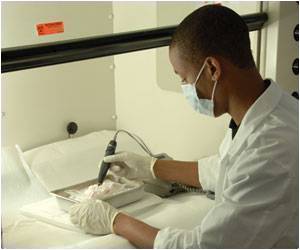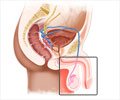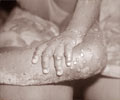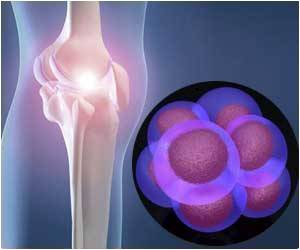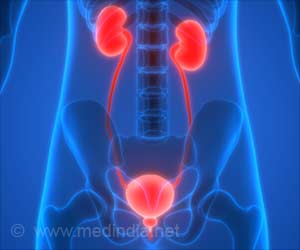New test for viral infections takes just 50 minutes to obtain results, saves hospital admissions and reduces development of antibiotic resistance.

‘The Point of care respiratory viral testing (POCT) test which takes just 50 minutes to obtain results, could save hospitals around €2,500 per patient not admitted to hospital, would help to relieve winter pressures on available beds, and may help to reduce the development of antibiotic resistance.’





Dr Kay Roy, consultant physician in respiratory and general internal medicine at West Hertfordshire Hospitals NHS Trust, Watford, and honorary senior lecturer at the University of Hertfordshire, Hatfield (UK), told the congress: "Initial results on the first 1,075 patients, show the potential of this service. We were able to identify 121 patients who had viral infections, lacked any evidence of bacterial infection, had a normal chest x-ray and only modest indicators of inflammation. Of these, hospital admission was subsequently avoided in 25% and unnecessary antibiotics were avoided in 50%. None of the 30 patients who avoided hospital admission and who were not prescribed antibiotics experienced adverse clinical outcomes, which is reassuring."
Point of care respiratory viral testing (POCT) is a new service that was launched at Watford General Hospital (UK) on 15 January 2018. It is quick and simple to perform; it involves inserting a swab into the patient's nostril to collect a sample of secretions from the back of the nose (1 minute); the sample is prepared and inserted into a compact machine called a FilmArray® (3-5 minutes), which analyses the sample and then generates a printout within 43 minutes.
"The whole process from obtaining a sample from the patient's nose to getting a result should take under 50 minutes, which has a potentially enormous impact on quality of care, improving the patient journey by allowing earlier, informed decision-making about patient management," said Dr Roy.
"This is the same test and technology as used in our microbiology laboratory, but we have brought the equipment to the patient's bedside. Results from samples sent to the microbiology lab can take more than two days."
Advertisement
The results of the tests were combined with other important clinical factors, such as chest x-ray findings and lack of evidence of bacterial infection, in 387 patients. From these, 121 patients were identified who were potentially suitable for avoiding hospital admission and antibiotics.
Advertisement
"In the first two weeks of this new service we diagnosed 50 cases of influenza: 22 by testing in the emergency department and 28 after patients were admitted. There were no bed moves in the former group but 14 in the latter, demonstrating that earlier bedside testing in the emergency department improves infection control, thereby avoiding bed and ward closures and reducing the risk of spreading infection to vulnerable groups. Infected patients with POCT-based early diagnosis of influenza can be admitted to appropriately designated beds if admission is required," she said.
The cost of POCT is offset by avoiding, for example, the cost of the microbiology laboratory testing and the cost of admitting patients to hospital beds.
"The findings clearly point towards a net cost saving. Each respiratory admission can cost around £2000 (€2,500). We could make a significant saving for national health services by avoiding unnecessary admissions in patients who may have otherwise been admitted and given antibiotics while waiting up to two days for results from the lab. Patients in whom antibiotics were avoided also contribute to cost savings, as do the beds and wards which remain open," said Dr Roy.
She is about to start a randomised controlled trial in the community, in which primary care physicians (GPs) will be able to refer patients to a community hub for POCT, with respiratory physicians available to support the GPs.
"The frequent underestimation of the role of viruses in respiratory admissions, both in previously well patients and those with chronic underlying disease such as COPD, has hindered good antimicrobial stewardship," said Dr Roy.
"This has sometimes led to other health problems for patients from inappropriate antibiotic use and hospital admission. We hope that quality of patient care can be improved with POCT for respiratory viruses, as well as helping to reduce the development of antibiotic resistance."
Professor Tobias Welte, from Hannover University, Germany, is President-Elect of the European Respiratory Society and was not involved in the study.
He said: "As European populations age, there is increasing pressure on the availability of hospital beds. Having to close a ward because a patient has been admitted with a viral infection that could spread to other patients and is not treatable with antibiotics places even more pressure on hospitals, as well as being expensive. The innovative approach described in this presentation could make a significant difference not only to hospitals but also to patients, whose quality of life will be much improved by avoiding unnecessary antibiotic use and admittance to hospital. However, this test will have to be compared to guidelines and recommended best clinical practice to confirm its usefulness."
Source-Eurekalert

